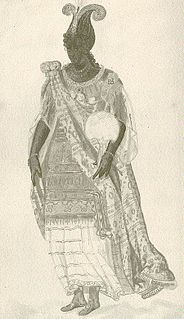Cassiopeia or Cassiopea may refer to:

Matthias was, according to the Acts of the Apostles, chosen by the apostles to replace Judas Iscariot following the latter's betrayal of Jesus and his subsequent death. His calling as an apostle is unique, in that his appointment was not made personally by Jesus, who had already ascended into heaven, and it was also made before the descent of the Holy Spirit upon the early Church.
In Greek mythology, the name Emathion refers to four individuals.
The terms Aethiops, Ethiop, or Ethiope are archaic words for a dark-skinned person, often from Ethiopia. They may also refer to:

In Greek mythology, Cepheus is the name of two rulers of Aethiopia, grandfather and grandson.

NGC 7380 is an open cluster discovered by Caroline Herschel in 1787. William Herschel included his sister's discovery in his catalog, and labelled it H VIII.77. It is also known as 142 in the 1959 Sharpless catalog (Sh2-142). This reasonably large nebula is located in Cepheus. It is extremely difficult to observe visually, usually requiring very dark skies and an O-III filter.

The Masque of Blackness was an early Jacobean era masque, first performed at the Stuart Court in the Banqueting Hall of Whitehall Palace on Twelfth Night, 6 January 1605. It was written by Ben Jonson at the request of Anne of Denmark, the queen consort of King James I, who wished the masquers to be disguised as Africans. Anne was one of the performers in the masque along with her court ladies, all of whom appeared in black face makeup.
Elaea can refer to any of several different items in ancient geography.
Apollonopolis or Apollinopolis may refer to any of several ancient cities in Egypt or Aethiopia, including:

Ancient Aethiopia, first appears as a geographical term in classical documents in reference to the upper Nile region, as well as certain areas south of the Sahara desert. Its earliest mention is in the works of Homer: twice in the Iliad, and three times in the Odyssey. The Greek historian Herodotus specifically uses the appellation to refer to such parts of Africa as were then known within the inhabitable world.
Abhor and Mehraela were a brother and sister who were martyrs for the Christian faith. Etymology of the word "Abhor": from Latin abhorrēre, from "ab" (away) and "horrēre". The book of their "acts" has been lost. Their feast day is celebrated on January 9 in the Coptic Church.
Abratacus is a saint of the Coptic Church. His feast day is April 16.
Aethiopia is a genus of beetles in the family Cerambycidae, containing the following species:
Aethiopia elongata is a species of beetle in the family Cerambycidae. It was described by Per Olof Christopher Aurivillius in 1911.
Aethiopia lesnei is a species of beetle in the family Cerambycidae. It was described by Stephan von Breuning in 1948.
Aethiopia lineolata is a species of beetle in the family Cerambycidae. It was described by Stephan von Breuning in 1939.
Aethiopia paratanganjicae is a species of beetle in the family Cerambycidae. It was described by Stephan von Breuning in 1971.
Aethiopia tanganjicae is a species of beetle in the family Cerambycidae. It was described by Stephan von Breuning in 1964.
The Apostolic Nunciature to Egypt is an ecclesiastical office of the Catholic Church in Egypt. It is a diplomatic post of the Holy See, whose representative is called the Apostolic Nuncio with the rank of an ambassador.




